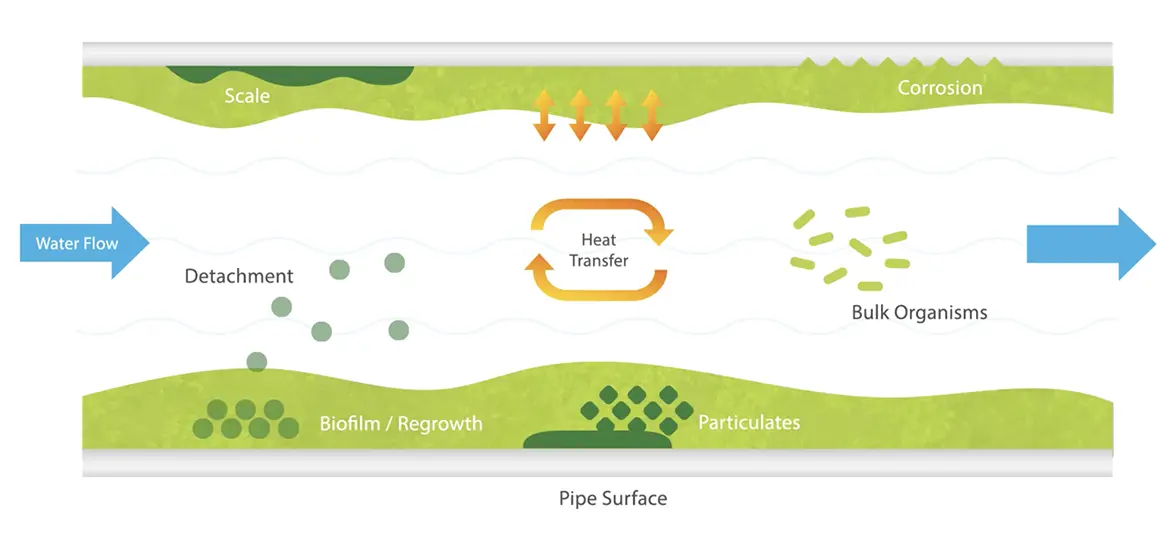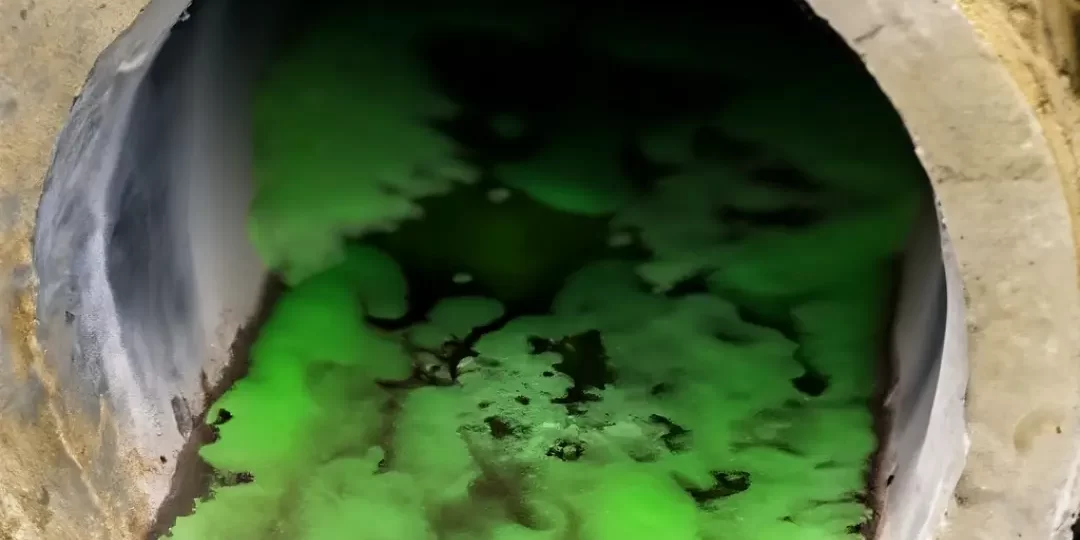Biofilm is a slimy and sticky layer that can be found on various surfaces, including drinking water pipes.
It is a complex community of microorganisms that can have harmful effects if not appropriately managed.
When biofilm forms in drinking water treatment systems, it can cause problems such as reduced water flow, increased energy consumption, and even water supply contamination.
Biofilm Formation in Drinking Water Treatment Systems
The biofilm formation in drinking water treatment systems begins with the attachment of microorganisms to the surface of pipes and other system components.
 Once attached, the microorganisms produce a matrix of extracellular polymeric substances (EPS) that hold the community together and protect it from environmental stresses, such as chlorine disinfection and changes in water flow.
Once attached, the microorganisms produce a matrix of extracellular polymeric substances (EPS) that hold the community together and protect it from environmental stresses, such as chlorine disinfection and changes in water flow.
Methods for Managing Biofilm
Biofilm in drinking water treatment systems can be managed through various methods, including physical removal, chemical treatment, and changes in system design. Physical removal methods, such as brushing and flushing, can effectively remove biofilm from pipes and other system components, but this does not prevent it from forming again. Chemical treatments, such as chlorine and ozone, can also effectively reduce biofilm growth.
Chlorine Dioxide Biofilm Prevention and Removal
Chlorine Dioxide has been found to be highly effective in removing biofilm from various surfaces. It is a powerful oxidising agent that can break down the protective matrix of EPS that holds the biofilm together. Once the EPS is disrupted, the microorganisms in the biofilm are exposed and can be more easily killed by the Chlorine Dioxide.
Chlorine Dioxide is also effective in penetrating the deepest layers of the biofilm, where other disinfection methods may not be as effective. It is an important tool in preventing and controlling biofilm formation in various settings, including healthcare, food processing, and water treatment.
In addition to these methods, system design changes can help prevent biofilm formation in the first place. For example, using materials less prone to biofilm formation, such as copper and stainless steel, can help reduce the likelihood of biofilm growth.
Scotmas – Your Biofilm Prevention Partner
Scotmas’ expertise in Chlorine Dioxide makes us an ideal partner for operators looking to avoid and treat biofilm issues. Chlorine Dioxide is a powerful and effective method for preventing and removing biofilm from various surfaces, including those found in water treatment systems.
We deeply understand Chlorine Dioxide and its application in preventing and managing biofilm growth. By working with us, operators can implement effective biofilm prevention and management strategies that ensure the safety and quality of their drinking water systems.
Understanding and Managing Biofilm
Understanding the formation and management of biofilm in drinking water treatment systems is crucial for ensuring the safety and quality of our drinking water. By implementing effective prevention and management strategies, you can ensure your drinking water systems remain free from harmful biofilm growth.
If you need expert advice on industrial water treatment solutions, don’t hesitate to call Scotmas. Our team of experienced professionals can provide you with customised solutions to meet your specific needs. Take action today and call Scotmas to schedule a consultation!






